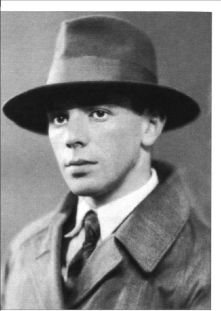

January 19, 2007 is the date for the world scientific community to celebrate the 95th anniversary of the birth of Leonid Vital'evich Kantorovich. His creation of a mathematical theory of the best use of resources won a Nobel prize in economics and brought glory to the Russian science.
Kantorovich invented linear programming in 1939. At the same time he made his major contribution to mathematics, the theory of Dedekind complete vector lattices also called K-spaces. Kantorovich discovered “a kind of generalized numbers” and suggested new models of the real axis which is the main tool of the mathematics of variable quantities. Practically none has survived of those who knew Kantorovich in the prime years of his creativity. The blurred photos of the late 1930s reveal a serene gaze of a maverick genius.
The ideas and methods of linear programming gave rise to deep interdisciplinary research, trespassed the frontiers of economics, and won appreciation in the various spheres of human activities. is difficult to distinguish another scholar
It is difficult to distinguish another scholar in the history of the twentieth century who contributed as much as him to the fusion of mathematics and economics, the sciences with the antipodal standards of scientific thought. Israel Gelfand pointed out that he can list only John von Neumann and Andrei Kolmogorov alongside Leonid Kantorovich among those few of his contemporaries who synthesized the mathematical and humanitarian cultures. The gift of Kantorovich falls beyond any doubt. However, it is far from enough to be gifted in science. The human being is primary; the scholar is secondary. The papers of Kantorovich hide his notes on the self-teaching technique of the art of dancing...
The phenotype of Kantorovich as well as his natural character unveiled a few of the traits harmful to successful work in science and conspicuously incomparable with the craft of “implanting” new methods and skills into industry and technology. Kantorovich had nothing in common with any of his genuinely or ostensibly successful compatriots but remained a challenging “dark duckling” in the national scientific establishment.
Alfred Marshall, the founder of the Cambridge school of neoclassicals and the author of a multi-volume treatise on political economy, vehemently collated the mathematical and economic trends of thought. He wrote that “there is no room in economics for long trains of deductive reasoning” and claimed that the aim of analysis and deduction in economics “is not to forge a few long chains of reasoning, but to forge rightly many short chains and single connecting links....”
Marshall’s metaphor of a plentitude of short “combs” has nothing in common with the upside-down pyramid of the cumulative hierarchy of the von Neumann universe, the residence of the modern Zermelo–Fraenkel set theory. It is from the times of Ancient Greece that the beauty and power of mathematics rest on the axiomatic method which presumes the derivation of new facts by however lengthy chains of formal implications.
The conspicuous discrepancy between economists and mathematicians in mentality has hindered their mutual understanding and cooperation. Many partitions, invisible but ubiquitous, were erected in ratiocination, isolating the economic community from its mathematical counterpart and vice versa. This status quo with deep roots in history was always a challenge to Kantorovich, contradicting his views of the inevitable integration of mathematics and economics.
The contradistinction between the brilliant achievements and the instances of poor adaptation to the practical seamy side of life is listed among the dramatic enigmas by Kantorovich. His life became a fabulous and puzzling humanitarian phenomenon. Kantorovich’s introvertness, obvious in personal communications, was inexplicably accompanied by outright public extravertness. The absence of any orator’s abilities neighbored his deep logic and special mastery in polemics. His innate freedom and self-sufficiency coexisted with the purposeful and indefatigable endurance that reached the power of a “wolf grip” in the case of necessity. The freedom of Kantorovich can hardly bewilder anyone as stemming from his essence, the gift of mathematics. His kindness and mildness were inborn. The tenacity and tremendous force of penetration were the acquired traits that he selected and cultivated conscientiously for the sake of rationality.
Kantorovich might seem a looser in regard to the acknowledgement of his great idea of the fusion of mathematics and economics. However, this opinion is definitely wrong. Despite the disdaining and neglecting of Kantorovich and his ideas, their triumph is incontestable. The unrefutable evidence transpires in the drastic reorganization of the entire system of education of economists as well as in the already indispensable mathematization and informatization of each instance of economy in its every functional or managerial aspect. The stance of mathematics and the dream of optimality incarnate in everyday routine gadgets of the working economist.
Calculation will supersede prophecy. Economics as a boon companion of mathematics will avoid merging into any esoteric part of the humanities, or politics, or belles-lettres. The new generations of mathematicians will treat the puzzling problems of economics as an inexhaustible source of inspiration and an attractive arena for applying and refining their formal methods.
The life of Kantorovich is a turnpike of service to his homeland irrespective of the prevalent ideological obstinacies. This lesson is of utmost import these days. Attempts at slandering and silencing the life and legacy of Kantorovich are doomed to vanish. Pygmies can never hide a giant...
The genius of rationality in science, Kantorovich was ingeniously rational in choosing his world-line and path in science. He bequeathed us an exemplar of the best use of personal resources in the presence of restrictive internal and external constraints.
November 29, 2006
| English Page | Russian Page |